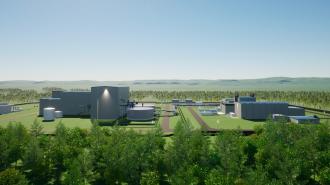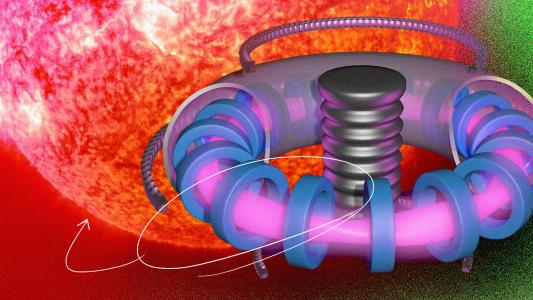TerraPower — a startup founded by Bill Gates in 2008 — is on a mission to make nuclear power great again with Natrium, a new kind of advanced nuclear technology.
“We envision a future where nuclear energy plays a significant role in the global transition to a lower-carbon economy and complements renewable energy sources,” TerraPower CEO Chris Levesque told Freethink.
Nuclear power 101: Nuclear fission occurs when a single atom is split into two. This releases a tremendous amount of heat, and nuclear power plants use that heat to boil water, creating steam that spins electricity-generating turbines.
Nuclear power is more dependable than solar or wind, and while the fission process does produce a small amount of radioactive waste that must be stored, it doesn’t generate carbon emissions, making it a cleaner source of energy than fossil fuels.
The challenge: Despite these advantages, nuclear power provides just 10% of the world’s electricity today, and its share is on the decline, largely because many old plants are nearing the end of their lives, and building replacements requires a lot of time and money.
Nuclear power is more dependable than solar or wind and cleaner than fossil fuels.
The cost and construction time for nuclear plants has been getting worse over time, too.
In 2009, for example, Georgia approved a project to build two new nuclear reactors. Those were supposed to be operational by 2017, but the first just went online in 2023, and one is still under construction. The budget for the two plants, meanwhile, is now over $30 billion — more than double the initial estimate.
Aside from the cost and time commitment, high-profile meltdowns, like Chernobyl and Fukushima, have soured public opinion on nuclear power since its heyday in the 1970s.
Next-gen nuclear: Climate change is now renewing the world’s interest in nuclear, and TerraPower’s Natrium technology could play a pivotal role in making nuclear power a big part of the clean energy future.
In a Natrium plant, the nuclear fission reaction is used to heat liquid sodium metal, rather than water. Because this material’s boiling point is 8 times higher than water’s, it has the capacity to absorb a lot more heat. This drastically reduces the risk of the reactor’s core — the place where fission is actually happening — from getting too hot and causing a meltdown.
The liquid sodium is then used to heat a kind of salt that’s solid at room temperature, but liquid at high temperatures. The molten salt is sent to a large storage tank where it acts like a battery, holding the heat until it’s used to boil water and create steam for turbines.
A key difference between a Natrium plant and a traditional nuclear power plant is size — by designing the facilities to be smaller, TerraPower is reducing the financial and time commitment needed to build them.
Because TerraPower can decide when and how much molten salt is released from the storage tank, it also has better control over the plant’s electricity output. This could be incredibly useful for shoring up grids powered by renewables — we can use wind or solar when it’s available, and then switch to nuclear power from a Natrium facility when there isn’t enough.
“The Natrium reactor … is the only advanced nuclear reactor in development that can offer baseload power as well as the ability to ramp power up and down to balance renewable energy output,” Levesque told Freethink.
Looking ahead: In August, TerraPower purchased land in Wyoming to serve as the site of its first commercial-scale Natrium plant. Construction on the Wyoming facility is expected to kick off in 2024, with the plant operational by 2030.
“As we look ahead to 2050, we anticipate widespread deployment of advanced nuclear technologies.”
Chris Levesque
The plant will have a max capacity of 500 MW — that’s enough power for 400,000 homes, but still far less than the Georgia reactors’ combined capacity of 2,234 MW. However, that first Natrium plant is expected to cost just $4 billion, and TerraPower hopes to be able to get the cost of future plants down to $1 billion.
The US Department of Energy is covering nearly half of the cost of the Wyoming facility, while TerraPower and its partners will make up the difference. The company is already researching sites for future US-based Natrium plants, as well as working with teams in Japan and Korea to advance the use of nuclear power in those nations.
“As we look ahead to 2050, we anticipate widespread deployment of advanced nuclear technologies, and we aim to be at the forefront of these developments, contributing to a cleaner and more sustainable energy landscape for generations to come,” Levesque told Freethink.
We’d love to hear from you! If you have a comment about this article or if you have a tip for a future Freethink story, please email us at [email protected].






